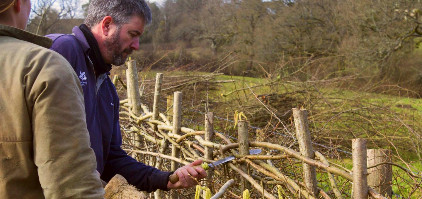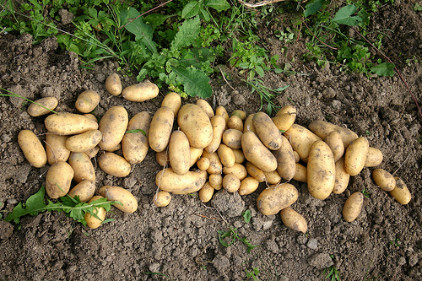
bringing nature, nurseries and gardeners together Jan 17, 2019
|
|
Nursery notes: TreeFolks is giving away a thousand trees this Sat. at the Asian American Resource Center. Pecans, red and burr oaks, Eve's necklace, peach trees and more will be in stock: 9 a.m. - noon. 8401 Cameron Road, 78754. TreeFolks
On Sat. at 10 a.m. Jim Kamas presents the 17th Annual Fruits, Nuts, and Berries Workshop at the Natural Gardener. On Jan. 26 at 10 a.m. join Stacie Primeaux for a class on Pruning Grape Vines. (She will be teaching the Kniffin method.) Propogating your Favorite Plants will be the topic for the Garden Club of Austin's Jan 24 meeting:7:30 p.m. Zilker Botanical Gardens: TGCOA
Thanks to PeteVanDyck for his fascinating talk on Monday evening at the Austin Organic Gardeners Club. His perma- culature approach has already saved millions of gallons from going down the drain. Volunteer opportunities abound at Pete's Earth Repair Corps. Sincere thanks to Joane Rylander for help revamping this newsletter, and also for creating the Austin Garden website - which we launch next week. ❦

Mick Vann's shade plant list: for gardeners with a problematic shady spot, I have great news. Hidden among the recesses of KLRU's archives I came across Mick's extensive list of plants that do well in the shade. You will be amazed! Apart from being a good friend to It's About Thyme, for many years Mick worked as a horticulturist for UT's College of Natural Sciences. CTG ❦

Hedge Funds: 'Hippies, farmers. . . and Prince Charles' are working together to preserve the U.K.'s hedgerows. Between 1947 and 1985, 100,000 miles of hedge were lost — one-quarter of England’s stock, enough to girdle the planet four times. Thanks to events such as the Hedgelaying Championships, this 'hedge apocalypse' is over, reports the Washington Post ❦
The Austin Garden is sponsored by Hays Free Press 
Central Texas Gardener: On tour, the compressed earth house and native plant garden of artist Claudia Reese of Cera-Mix Studio. In the studio Elizabeth McGreevy valiantly defends the mountain cedar. (Her book 'Wanted! Mountain Cedar: Dead and Alive!' is set for publication in August. Saturday 4 p.m., Sunday 9 a.m. KLRU ❦
 photo by tillwe (Creative Commons
Planning for Potoatoes
by Chris Winslow
Towards the end of this month my garden thoughts turn to the potato patch. Potatoes have to be one of the most satisfying vegetable crops for me. . . in the growing, the harvest, and in the kitchen.
Ounce for ounce, potatoes have just about the greatest nutritional package one can imagine.
They are one of the most economical and nutritious foods we can grow. Some say the complex carbohydrates of potatoes make them ‘brain-food.’
And they’re easy to grow. All you need is a sunny area and good drainage. Potatoes are planted not from seed but from ‘seed’ potatoes.
Later this month you will start to see them in local nurseries and feed stores. These seed potatoes are cut up into smaller pieces with dominant ‘eyes.’ (This is the bump - the node - where the new potato sprouts.)
Next step: dust the fresh cuts with sulfur powder and place them in a airy, dark place to encourage the ‘eyes’ to sprout.
I like planting the potato pieces around Valentine’s Day when the ground temperature gets close to 50 degrees. Plant the tubers in a row 12 inches apart. Cover them with 3 to 4 inches of soil.
This soil should be rich in compost and well fertilized with a balanced organic blend. Potatoes like the soil to be loose. (Composted leaves and straw work well.)
The plants will emerge in 2 to 3 weeks depending on the weather. At this time add some additional soil around the base of each plant. When the plants get 6 to 8 inches tall, I like to cover them half way
Keep them moist during the growing season but not overly wet, or they will rot.
Towards the end of May, potato plants will begin to wilt and the harvest can commence. Now the real fun begins.
If you sift through the soil around each plant, you will find little (and large) potatoes everywhere.
Potatoes can keep for months if placed in a cool, well-ventilated location. I kept them in the laundry room on racks till November, without having to purchase them once in the grocery.
Red potatoes seem to do better in central Texas, but folks also have had great success with whites. The top red varieties are Red Lasoda and Red Pontiac. I can’t tell the difference. The most popular white potato is Kennebec.
This year, I’m looking forward to Yukon Gold. This buttery, golden variety is so-o-o yummy for mashed potatoes. Happy potato growing everybody. They’re a ton of fun! ❦
|
 
It's About Thyme Legacy Publications.
Contact newsletter editor Darrel Mayers with any ideas for articles or interesting links at internationalrain@yahoo.com (hitting 'reply' to this email won't work) |
|
|